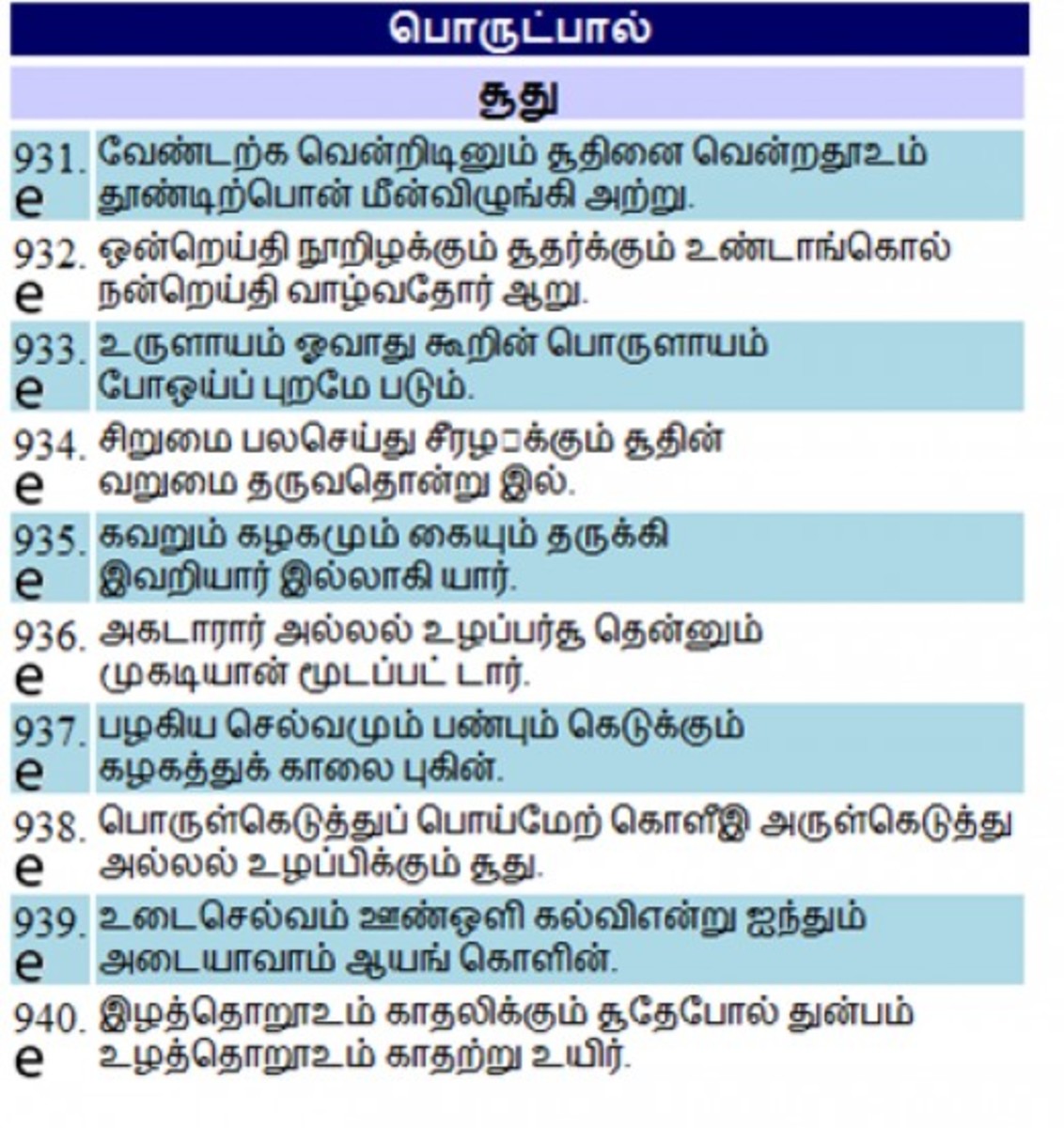Purananuru With Meaning In Tamil Pdf
'The following works of art and literature are among the most remarkable contributions of the Tamil creative genius to the world's cultural treasure and should be familiar to the whole world and admired and beloved by all in the same way as the poems of Homer, the dramas of Shakespeare, the pictures of Rembrandt, the cathedrals of France and the sculptures of Greece. The ancient Tamil lyrical poetry compiled in ‘The Eight Anthologies’; this poetry is so unique and vigorous, full of such vivid realism and written so masterfully that it can be compared probably only with some of the pieces of ancient Greek lyrical poetry.' (- Czech Professor Dr. Kamil Zvelebil in Tamil Culture - Vol. October, 1956) நல்ல, ஒத்த ஓங்கு, கற்றறிந்தார் ஏத்தும் ் என்று இத்திறத்த எட்டுத் தொகை Mu.Varadarajan on Ettuthokai at, Kuala Lumpur, Malaysia, April 1966 Introduction 0.1 The eight anthologies called Ettuthokai form part of early Tamil literature known as Sangam literature written eighteen centuries ago. They consist of two thousand three hundred and seventy-one poems varying from small stanzas of three lines in Ainkurunuru to stanzas of forty lines in Purananuru. There are four hundred and seventy poets known either by their proper names or by causal names called from their works.

The authors are unidentified in the case of a hundred stanzas. The poets belonged to different parts of Tamilnad and to different professions. Some of them were very popular like Kapilar, Nakkirar and and some others are rarely remembered by their names. Yet a general harmony prevails throughout these eight anthologies.
The tone and temper of the age is reflected in all their poems with a singular likeness. They were moulded according to certain literary conventions or traditions that prevailed in the Sangam age. Yet they reveal the individual genius of the poets who sang them. 0.2 The convention of the later days that poetry should deal with the four aspects of life, viz aram (virtue), porul, (wealth and politics), inpam (love and pleasure) and vitu (salvation), was not prevalent, in those early days. The poets sang either of Akam or Puram. Akam dealt with ideal love and Puram with the rest, viz. War, munificence, etc.
0.3 Of the eight anthologies five are on Akam, two on Puram, and one on both. Six of them are in 'akaval' metre which is a kind of blank verse, interspersed with alliterations and rhymes. The poems on Akam as well as Puram theme are written in this metre and its regulated and subtle music adds to the poetic beauty. This metre is a simple but wonderful instrument which causes no impediment to the freedom of expression of the poet. In has been found to be an appropriate and natural medium for the expression of the valuable experience of the poets. The other two anthologies that are not written in `akaval' metre are Kalittokai and Paripatal. The poems of Kalittokai are in Kali metre which is well known for its dramatic and lyrical qualities and which, according to Tolkappiyanar, is well suited to express the emotions of the lovers.
There is repetition of certain lines and phrases and this, added to the haunting music of the metre, is very appealing. Paripatal is a metre full of rhythm and music and the anthology known by this name consists of songs composed in this metre. There are religious poems as well as those on love-themes.

Purananuru Poems
The love-theme is worked against the background of bathing festivities. These songs were sung in different tunes as is evident from the notes on the music at the end of these. The names of the musicians who set tunes to these songs are also mentioned therein. ‘Akam’ Poetry 1.1 In the poems on Akam, the aspects of love of a hero and a heroine are depicted. The story of love is never conceived as a continuous whole. A particular moment of love is captured and described in each poem as the speech of the hero or the lady-companion or somebody else.
Purananuru With Meaning In Tamil Pdf
There are one thousand, eight hundred and fifty poems of this type in five anthologies, viz. Akananuru, Narrinai, Kuruntokai, Ainkurunuru, and Kalittokai. One may expect a sort of monotonous repetition in these hundreds of poems on more or less the same aspects of ideal love. This is what one finds in all the Indian arts, sculpture or iconography or music. But when looked at carefully, the individual genius of the poet is revealed through his contribution. He gives something which is already familiar to the readers, something which assures them of a continuity of the past art, but he gives it with his fine colourings distinguished by his own rich experience and imagination. And thus instead of monotony we feel a surprise that so many variations of the same theme should be possible.
The first attempt to arrange all the contexts of such love poetry into a series of continuous succession of speeches giving as it were the story of two lovers is found several centuries later in the `kovai' species. 1.2 Love was dealt with in five ‘tinais', each pertaining to a particular region with its own suitable season and appropriate hour of the day and its flora and fauna and characteristic environment. The aspect of love is called the uripporul or the subject matter of the `tinai; the region, the season and the hour are called the `mutal porul' or the basic material; the objects of environment are denoted as `karupporul'. Kurinci-tinai or the clandestine union of the lovers is characteristic of the mountainous region; mullai-tinai or the life at home spent in expectation of the return of the hero is set with the background of the forest region; maruta-tinai or the sulky life has the agricultural tract as its background; neytal-tinai or the life of despair is characteristic of the sea coast; palai-tinai or the life of desolation in separation is depicted in arid tract.
